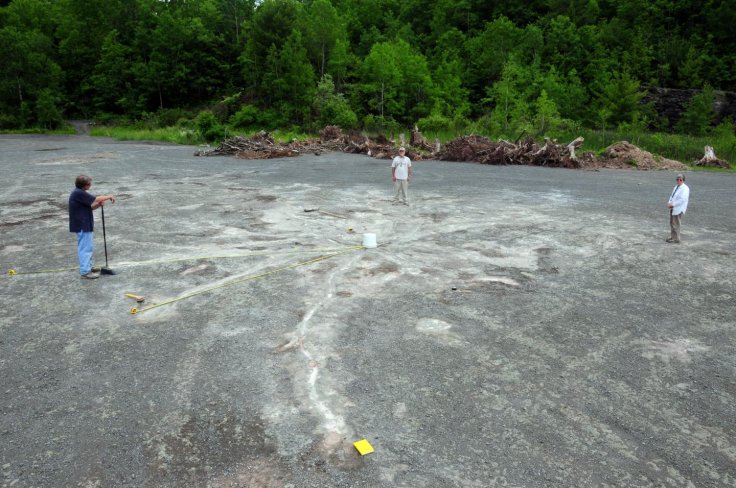A new study, published in Current Biology, said that researchers have found evidence of the earliest fossilised trees, which dates back to 385 million years during the Devonian Period, in the Catskill region near Cairo, New York.
The team of researchers led by faculty at Binghamton University, State University of New York, uncovered the extensive root system while sifting through fossil soils in the region. This study findings are the first piece of evidence that the transition toward modern forests began way much earlier than previously believed.
Though seeded plants came into existence some 10 million years later, these preserved root systems show that the trees with leaves and wood, which are common in seed plants, were present during that time.
Lead author William Stein, emeritus professor of biological science at Binghamton University, said, "The Devonian Period represents a time in which the first forest appeared on planet Earth. The effects were of first-order magnitude, in terms of changes in ecosystems, what happens on the Earth's surface and oceans, CO2 concentration in the atmosphere, and global climate. So many dramatic changes occurred at that time as a result of those original forests that basically, the world has never been the same since."
In 2012, Stein and his team of researchers, who have been working in the Catskill region, described 'footprint evidence' of the fossil forest at Gilboa that was referred to as the oldest forest on Earth. The discovery at Cairo, which is at a distance of about a 40-minutes drive from the original site, has now revealed that an even older forest with dramatically different composition exists.
Three unique rooting systems at Cairo site

There are three unique root systems at the Cairo site that lead the researchers to hypothesize that the forests of the Devonian Period were heterogeneous much like today with different trees occupying different places depending on the local conditions.
Stein and his team analysed the rooting systems and believed that one of those with rudimentary roots belonged to a palm-like tree called Eospermatopteris, which was first identified at the Gilboa site. Eospermatopteris, which is likely to have occupied many environments like a weed, has roots that relatively had limited range with a lifespan of a maximum of two years. However, before dying, the roots were replaced by other roots which would take the same space.
The second rooting system was identified as a tree called Archaeopteris and it shared many characteristics with modern seed plants. Reportedly, this tree had given the early hints that one-day seed plants will come into existence. During reproduction, Archaeopteris behaved more like a fern that released spores into the air instead of forming seeds. These were the first plants to have formed leaves and large woody plants formed from secondary tissues.
The researchers found that this tree has a strikingly modern underground system at Cairo that allows it to have a continuous expansion of roots, accommodating growth of a long-lived larger type of tree.
Stein said, "Archaeopteris seems to reveal the beginning of the future of what forests will ultimately become. Based on what we know from the body fossil evidence of Archaeopteris prior to this, and now from the rooting evidence that we've added at Cairo, these plants are very modern compared to other Devonian plants. Although still dramatically different than modern trees, Archaeopteris nevertheless seems to point the way toward the future of forests."
Similar to Carboniferous Period

The researchers identified the third rooting system belonging to a tree thought to only exist during the Carboniferous Period and beyond, "scale trees" belonging to the class Lycopsida.
"What we have at Cairo is a rooting structure that appears identical to great trees of the Carboniferous coal swamps with fascinating elongate roots. But no one has yet found body fossil evidence of this group this early in the Devonian." Stein said.
"Our findings are perhaps suggestive that these plants were already in the forest, but perhaps in a different environment and earlier than generally believed. Yet we only have a footprint, and we await additional fossil evidence for confirmation," he further added.









